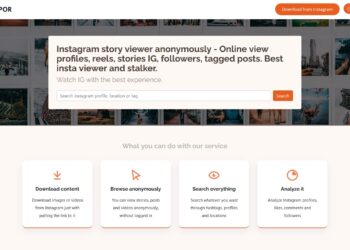==‘Google Ads vs Facebook Ads, which platform should I pick to promote my business?’ is probably one of the most asked questions to a PPC expert.
Millions of marketers across the globe today use Google Ads to generate business. And with the increase in social media users, marketers now also leverage these platforms to increase their revenue with the help of Facebook Ads.
Both Google Ads and Facebook Ads are highly effective in gaining website traffic and produce a tremendous return on investments. If you’re still behind on your digital skills, you should definitely check out this digital marketing online course to help you stay ahead in the digital war.
Advertising on these platforms costs a substantial amount of money, though it brings in great returns, one has to spend money wisely. So, before we get into the nitty-gritty of Google ads vs Facebook ads and which will be the best choice for you, let’s understand why advertising online is essential.
Why advertise online at all?
With the rise in dependency on smartphones, laptops and technology, people spend a great deal of time online. So much so that people are teased for being glued to their phones. Today people may not even raise their eyes from their screen to look at a poster or banner. So if you still stick to your old methods of advertising, there are high chances of them being skipped and overlooked by your consumers. With every consumer glued down to the devices of their choice, your best bet in getting people to view and interact with your advertisements is through online advertising.
Online advertising gives people the power to get to know everything about your product or service in seconds. In fact, the number of people who rather engage in online shopping is skyrocketing day by day. This has led to a highly competitive market as similar businesses are having trouble in outshining their competitors.
With online advertising, you can:
- Increase your brand awareness
- Increase in the circulation of information
- Create buyer personas
- Update buyers on what is new with your business
- Consistent display of advertisements may improve sales
- Makes available various payment methods
Google Ads vs Facebook Ads: The Difference
Before we jump to the big debate, ‘Google ads vs Facebook ads’ and figure out which platform is more suitable to your business, it is important to answer the question, ‘what is the difference between Facebook Ads and Google Ads’.
Google Ads
With over 5 billion Google searches every day, Google gives businesses the opportunity to promote their products or services systematically. And how do they do that? By giving up digital real estate.
Confused? Don’t be. The ‘digital real estate’ is nothing but the slots available on Google’s first result page. Businesses across the globe bid on keywords to just rank on the top slots of Google’s first result page. Why? Because while Google’s first result page sees a 32.5% of traffic, the second results page only sees around 17.6%.
That’s why:
Now that we’ve got a better understanding of Google ads and its importance in the epic battle between Google ads vs Facebook ads, let’s dive into what Facebook ads are.
Facebook Ads
Facebook ads are the best way to promote businesses, brands, products and services on social media platforms like Facebook and Instagram. When used correctly, it can generate lucrative revenue for a business.
It’s no secret that Facebook Ads platform has been a boon for advertisers as it helps categorize billions of people and narrow down to a target audience to advertise to.
Social media allows advertisers to view their consumer’s interests through the hashtags and profiles they follow, they can even follow their consumer’s footprints on what they view on social media through ‘cookies’. It helps them to identify what the consumers may be looking for or things that they have an affinity to. This information is used to create buyer personas that help businesses with creating tailored content.
Over the years, Facebook ads have become highly competitive due to the rise in the amount of monthly active users. It has made Facebook the optimal social media platforms for businesses to advertise on. However, while Google ads are known for the high intent of their users, Facebook Ads are displayed to more low intent users. As on social media, users are not actively searching for any product or service.
Google Ads vs Facebook Ads: How they Work
While both fall under PPC advertising platforms, they work differently. Google ads are the paid search ads you see on Google’s search result and Facebook ads are the paid social ads you see on your social media feed.
How Google Ads Work
Google Ads appear on the first page of a search engine’s result page (SERP) in the same format as organic search results. These ads appear based on the keywords searched by a user.
Businesses bid for their ads to show up when a particular keyword is typed into the search engine. If the keyword is part of the search query and more than one business bidding for that keyword, Google Ads platform establishes an auction.
When you bid, you choose a group of keywords. Google does a crawl to identify the most relevant keyword and submits it for the auction. Now, Google’s algorithm carries out a few calculations to identify which ad should show up where. It calculates a value known as ad rank, the higher the ad rank the better the position you get.
The ad rank is the product of the highest CPC bid (Cost Per Click, which means you only have to pay if people click on your advert) and the Quality score (It is determined by an accumulation of factors of your website).
This moderation method creates a level playing field for businesses to prosper for their skills and quality of their products or services rather than monetary dominance.
There are many formats of Google Ads that you can choose based on your marketing strategy.
You can advertise your business on Google either through search or display networks. The search network displays advertisements on a search engine’s result page (SERP) where you conduct your search, and the display network displays advertisements on websites or applications that are related to your keywords.
Google Shopping is a service that allows your ads to show up at the top of the page with information about your product – features, reviews, description, ratings, etc. If you’re advertising an e-commerce related business, this is a pretty good bet to get your business going.
Video ads are possible with Google as well. On Display networks or streaming sites such as YouTube before the video plays.
How Facebook Ads Work
The Facebook Ad Manager platform allows advertisers to promote businesses to a targeted audience determined based on location, demographics, interests and behaviour. Through this platform, you can mainly advertise on two social media platforms – Instagram and Facebook.
Facebook’s targeting options are a game-changer. To make up for the low intent of its users, Facebook offers advertisers with detailed targeting options – including options like location, age, gender, interests and more. This is what makes Facebook advertising so effective and a lucrative advertising option.
During the ad creation process, the Facebook Ad Manager platform will present you with a multitude of options to pick a marketing objective. Further, to create ads, you can choose your target audience, ad format, ad placement, ad copy and creative.
Through the Facebook Ad Manager platform, you can also choose when and on which social media platform your ad can be displayed. The types of ad formats available are – video ads, photo ads, slideshow ads, carousel ads, canvas ads, dynamic product ads and lead generation ads.
When done right, Facebook ads can capture dormant user interest that increases both – brand awareness and sales.
Google Ads vs Facebook Ads: The Final Verdict
From the information above, I think we can conclude that both marketing platforms are brilliant ways of bringing traffic to your website directly and indirectly.
Both platforms are quickly adapting to changes in the behaviour of the consumers. For example, people have become accustomed to viewing ads on the side panel and tend to develop ‘banner blindness’, which is when users ignore a portion of a website as they are aware it only contains adverts. Thus, Google and Facebook are now placing their ads more strategically to get more clicks on the advertisements.
Both platforms, together, can generate more revenue. Let me give you an example of how they come together. For instance, a consumer views your ad on social media, they must have had a previous interest in it for your ad to show up on their page. So, if they are intrigued by what your business has to offer. They may do their fair share of research on Google. This can even bring in organic traffic saving you some resources dedicated to advertising.
Here is a table to give you a summary of what each marketing platform has to offer:
Google Ads vs Facebook Ads at a Glance
| Google Ads | Facebook Ads | |
| How does it work? | Advertised based on keywords and software’s such as Google Ads or Pay Per Click. | Advertised based on demographics of people on the platform. |
| Primary Purpose | Best for people who already know what they want and searching for it directly. | Increasing brand awareness and gaining followers or potential customers. |
| Reach | Focused on users actively searching for your products or services | Everyone who has shown an interest in your business and demographic information |
| Cost | The higher your website’s the lower you have to pay to keep your ads at a higher rank. | Depending on your campaign it could range from $1 to $40. |
| Content | Advertise through minimal text, call only, defining image or shopping ads | Advertise through images, videos, slideshow, carousel or collection. |
| Effort to Run | Initially setting up the account and monitoring the campaign regularly followed by optimization. Much less content creation comparatively. | Initially setting up the account and adding exclusive content regularly followed by ongoing optimization. May have to reply to customers on a daily basis. |
| Success/Performance | Can be monitored using clicks, click-through rates, bounce off rates and number of sales. | Can be monitored through the number of likes, shares, comments and number of followers. |
We hope this detailed blog has helped you solve your dilemma ‘Google ads vs Facebook ads’. If you’re interested to learn more, check out these related articles we’ve handpicked for you.















